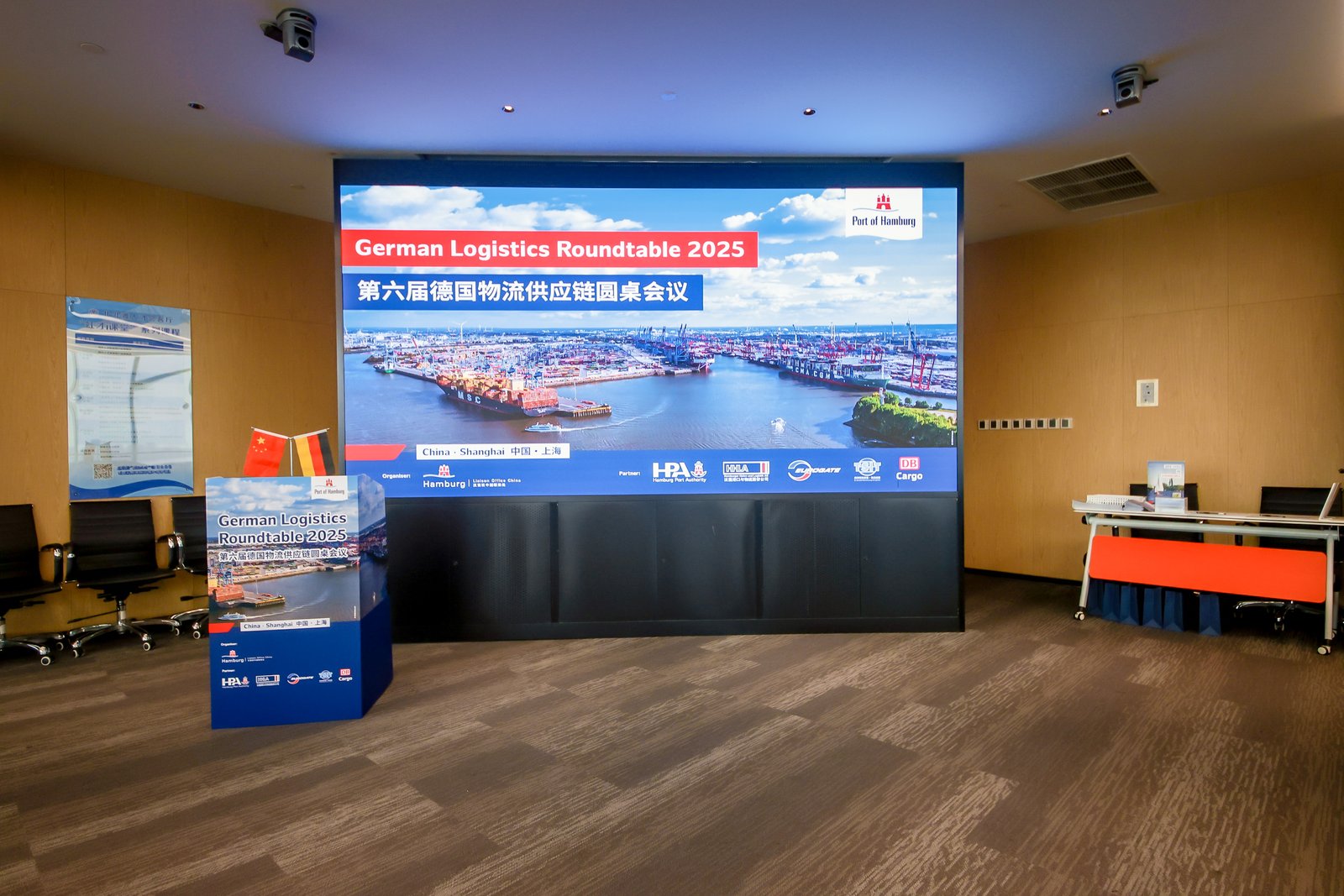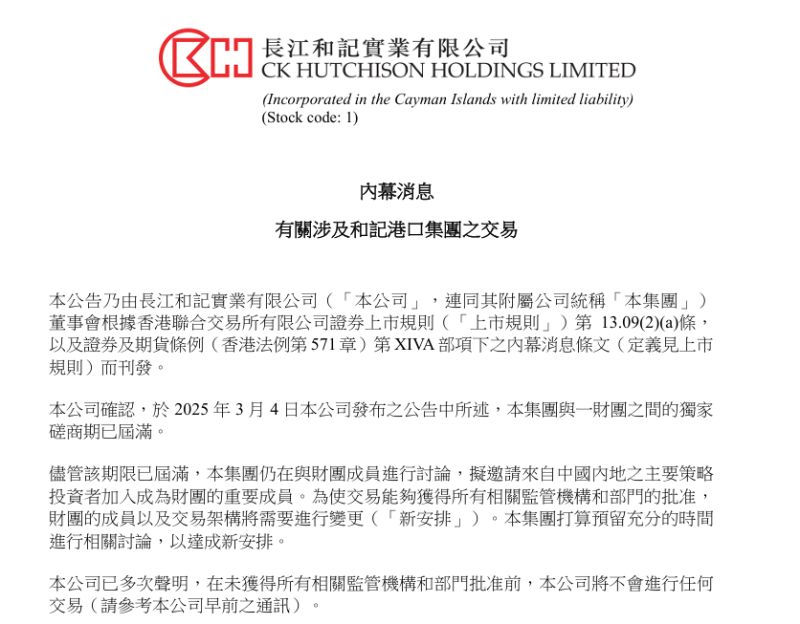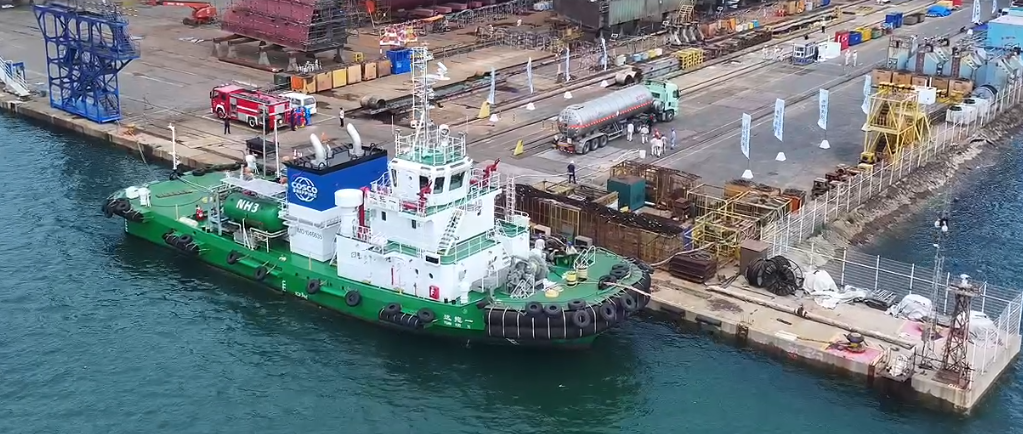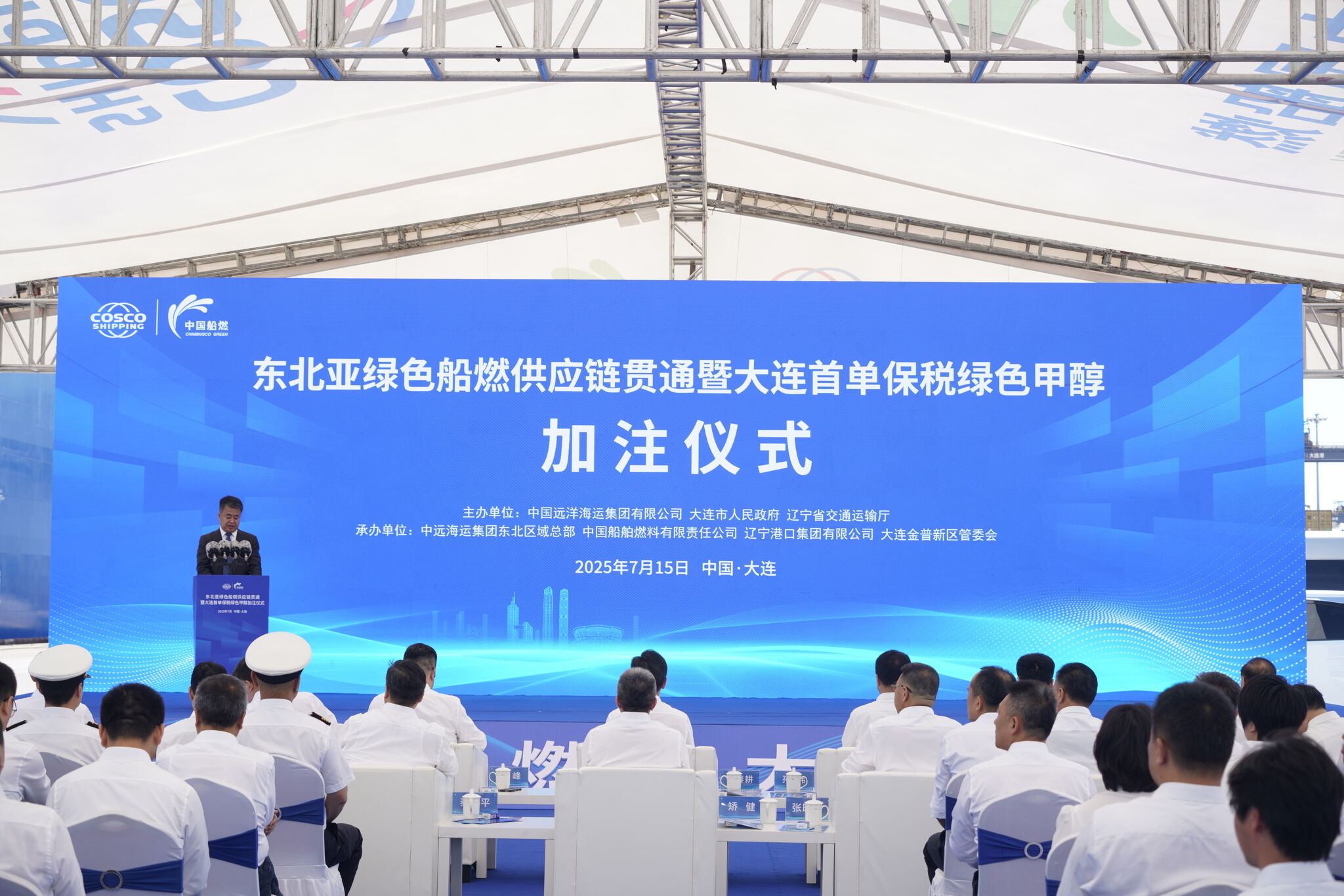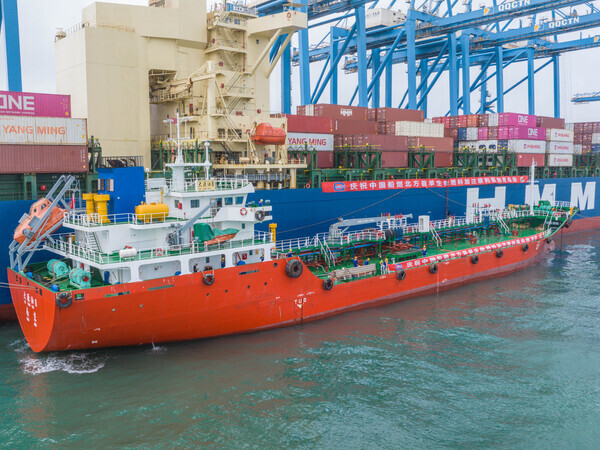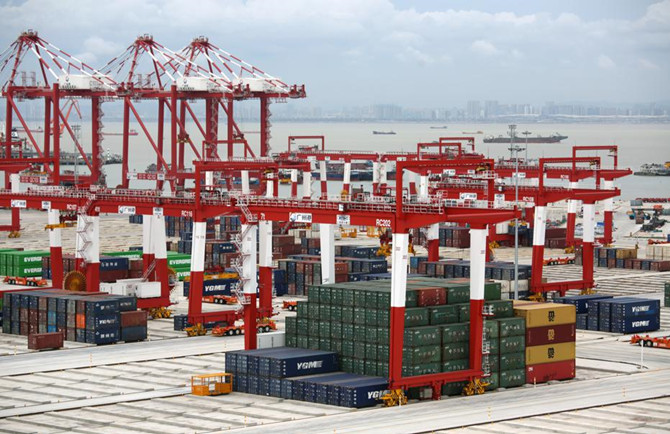
The hydraulic engineering construction of the fourth phase of Nansha port, the first fully automated container terminal in the Guangdong-Hong Kong-Macao Greater Bay Area, has been completed. The container yard is expected to be finished later this year.
In the active area of the terminal, which is located in Guangzhou, Guangdong province, containers are handled by intelligent guided vehicles and yard cranes, with no personnel on-site but monitored by staff at the intelligent operation center in an office building.
The automation is made possible by the Beidou satellite navigation system and technologies in fields such as 5G communication and artificial intelligence, said Xu Dejun, manager of the department of the Party works of Guangzhou Nansha United Container Terminal Co.
The bridge cranes, which load the containers on and off vessels, are controlled by remote staff in the intelligent operation center. Research is being undertaken to further automate the work of the bridge cranes. It needs to address the impact of constantly changing water levels and waves, Xu said.
The technologically advanced terminal calls for more innovation in construction, said Liao Hongzhi, general manager of China Communications Construction Co Fourth Navigation Bureau Guangzhou Nansha Branch, which is responsible for the hydraulic engineering and yard construction of the terminal.
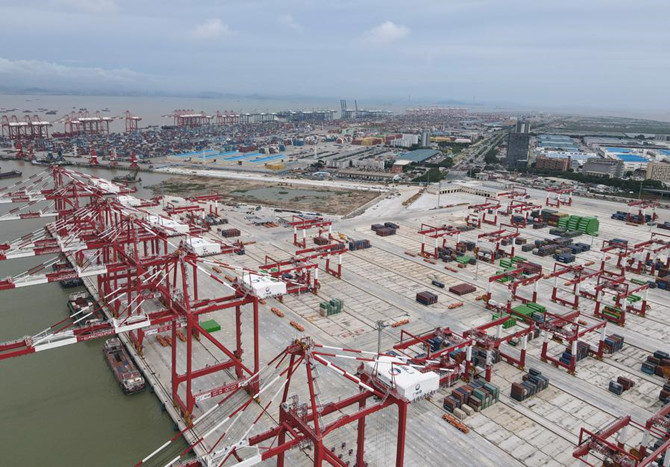
The use of IGVs means less ground settlement than in older terminals. After research and testing, lightweight foam concrete, which is used in highway construction, has been applied in terminal buildings for the first time.
Large-diameter tube-sheet composite piles and five-axis cement mixing piles are also being used for the first time.
As part of the company's innovative building information modeling (BIM) management platform, and to boost efficiency, a drone makes four trips daily to gather information on the progress in various parts of the construction of the 1.2 million square-meter site, said Han Wenfeng, Party secretary of the branch.
The new terminal is designed with two 100,000-ton berths, two 50,000-ton berths, 12 2,000-ton barge berths and four working vessel berths.
With the fourth phase, the Nansha Port area's annual container handling capacity will rise to 24 million twenty-foot equivalent units.
Source: China Daily
Source: China Daily
The opinions expressed herein are the author's and not necessarily those of The Xinde Marine News.
Please Contact Us at:


